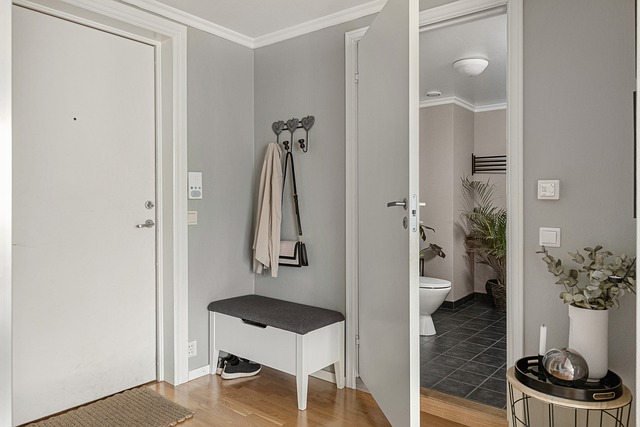Carpet shampooing is a comprehensive cleaning technique for rugs, removing dirt, stains, and odors while extending carpet lifespan. It involves selecting suitable shampoos based on fabric type, stain severity, and environmental factors, followed by vacuuming, pre-treating stains, applying shampoo, agitating, rinsing, and proper drying. This method revitalizes colors, eliminates odors, and enhances indoor aesthetics, making it crucial for maintaining a clean, healthy home environment and increasing property value. Regular carpet shampooing, combined with spot treatments and consistent care routines, ensures long-lasting rug quality for allergy sufferers and those seeking to preserve their home's visual appeal.
“Uncover the secrets to a spotless and revitalized home with our comprehensive guide to carpet shampooing. From understanding the basic principles to mastering advanced stain removal, this article equips you with all the knowledge needed for effective rug cleaning. Discover the numerous benefits of regular shampooing, learn to choose the ideal shampoo for your carpet type, and explore step-by-step techniques to ensure deep cleansing. Additionally, we’ll highlight common mistakes to avoid and offer valuable tips for maintaining your clean carpets.”
Understanding Carpet Shampooing: The Basics

Carpet shampooing is a meticulous cleaning process designed to rejuvenate carpets and rugs, eliminating deep-seated dirt, stains, and odors. Unlike surface-level cleaning methods, this technique delves deeper into the carpet’s fibers, extracting grime accumulated over time. It involves using specialized shampoos or detergents that effectively break down grease, grime, and other debris, while also preserving the carpet’s texture and color.
The process typically starts with pre-treating stubborn stains, followed by thorough wetting of the carpet with the shampoo solution. Agitation techniques, such as brushing or scrubbing, are employed to loosen dirt and facilitate its extraction. Once the carpet is thoroughly cleaned, it’s rinsed extensively to eliminate any residual soap. Proper drying is crucial to prevent mold growth and ensure the carpet remains soft and fluffy. Regular carpet shampooing not only maintains the aesthetic appeal of your rugs but also contributes to their longevity, making it an essential part of comprehensive home maintenance.
Benefits of Regular Carpet Shampooing

Regular carpet shampooing offers a multitude of benefits that extend beyond just removing visible dirt and debris. By deep cleaning your carpets, it helps to prolong their lifespan by preventing the accumulation of dust mites, allergens, and bacteria that can become embedded in the fibers over time. This is particularly important for households with members suffering from allergies or asthma, as regular cleaning can significantly reduce airborne triggers.
Moreover, carpet shampooing enhances the overall aesthetics and freshness of your indoor spaces. It revitalizes the colors and textures of your carpets, making them look as good as new. The process also eliminates unpleasant odors that might linger due to spills, pets, or general foot traffic. This not only creates a more pleasant living environment but can also increase the value of your property, as a clean and well-maintained carpet is often seen as a desirable feature by prospective buyers.
Choosing the Right Carpet Shampoo: Factors to Consider

When it comes to carpet shampooing, selecting the suitable product is a crucial first step in effective rug cleaning. Not all carpet shampoos are created equal; various factors influence your choice. Firstly, consider the type of fibres in your carpet. Different fabrics, such as wool or synthetic blends, may require specific cleaning agents to maintain their integrity without causing damage. Secondly, the severity of dirt and stains present plays a significant role. Heavily soiled carpets might need powerful enzymatic cleaners, while lighter stains can often be treated with mild, natural solutions.
Moreover, the age and condition of your carpet are essential considerations. Older rugs may have unique needs due to built-up grime or age-related fibre deterioration. Environmental factors also matter; if you live in a high-traffic area or near significant sources of moisture, choosing a shampoo that can cut through persistent dirt and prevent rapid re-soiling is vital. Always read product labels and follow instructions for the best results, ensuring your carpet shampooing approach aligns with your rug’s specific requirements.
Step-by-Step Guide to Effective Carpet Shampooing

Carpet shampooing is a thorough cleaning process designed to restore your rugs to their original state. Here’s a step-by-step guide for effective carpet shampooing:
1. Preparation: Start by vacuuming your rug to remove any loose dirt and debris. This ensures that the shampoo reaches deeper into the fibres. Then, identify the areas that require particular attention, such as stains or high-traffic zones. Gather all necessary tools, including a suitable carpet shampoo, a cleaning solution mixed according to the manufacturer’s instructions, and a clean, damp sponge or cloth.
2. Application: Apply the prepared cleaning solution to the rug using the damp sponge or cloth. Begin from one corner and work your way across, ensuring that you cover the entire surface evenly. For heavily soiled areas, apply more solution directly to those spots. Agitate the shampoo gently with a soft-bristled brush if your rug material allows it. Let the shampoo sit for a few minutes to allow it to penetrate the fibres effectively.
Common Mistakes to Avoid During Carpet Shampooing

Carpet shampooing is an effective way to clean rugs, but it’s not without its pitfalls. One common mistake people make is using too much shampoo or cleaning solution, which can leave excess residue and cause a strong chemical odor. It’s important to measure the correct amount for your rug size and follow the product instructions carefully. Another error is skimping on rinsing. Proper rinsing ensures that no soapy residue remains, preventing potential damage to fibers over time. Insufficient rinsing might lead to a sticky feel or even color fading.
Additionally, not all carpets are created equal. Using the wrong shampoo for your carpet type can cause harm. For example, using a harsh formula on delicate or woolen rugs could result in shrinkage or discoloration. Always identify your carpet’s material and choose a shampoo formulated for that specific type. Lastly, avoid over-shampooing, which can strip away natural oils, making your rug more susceptible to dirt and odors.
Advanced Techniques for Stain Removal with Carpet Shampoo

Carpet shampooing offers advanced techniques for stain removal that go beyond basic cleaning methods. Professional carpet shampoos are designed to penetrate deep into the fibers, effectively lifting dirt and stains that vacuuming alone can’t reach. These powerful formulas contain specialized ingredients that break down even the most stubborn spots, from coffee and wine to pet accidents and ink.
By combining shampooing with targeted spot treatments, you can achieve remarkable results. Always identify the type of stain for the best approach—blotting for liquid spills, applying a pre-treater for dried-on messes, and using enzymes for organic stains like grass or food. Regular carpet shampooing not only keeps your rugs looking fresh but also prolongs their lifespan by removing buildup and preventing the accumulation of dirt and allergens.
Maintaining Your Cleaned Carpets: Tips and Tricks

After your carpet shampooing session, it’s crucial to maintain the fresh clean look for as long as possible. Start by allowing your carpets to air dry completely before walking on them. This prevents any potential damage caused by wet fibres. Vacuuming regularly is another essential step; remove any dirt or debris that might have been dislodged during shampooing.
To keep your rugs in top condition, consider a regular cleaning schedule. Spot treatment for any stains caught early will prevent them from setting in. Additionally, using carpet protectors at door entries can reduce the amount of soil and grime tracked into your carpets, prolonging their lifespan between professional cleanings.
